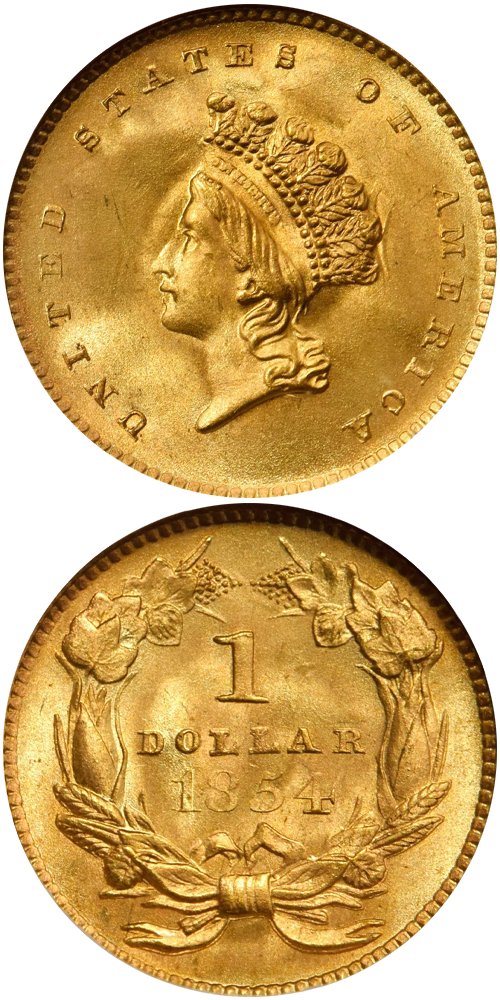1854 Gold Dollar
In 1854 Chief Engraver James Barton Longacre prepared a new design with an enlarged diameter of 15 millimeters, more convenient than the earlier size. The weight of the denomination remained unchanged, so the coins were made slightly thinner. Unfortunately, the design that Longacre chose, although aesthetically pleasing, was in too high relief for the thinner planchets, and most examples displayed poor definition in and around the centers. The dies often clashed early and frequently during press runs, and many survivors exhibit numerous pronounced clash marks on one or (usually) both sides. The Mint abandoned the new design after only three years of production, and in the third -- 1856 -- only the San Francisco Mint struck examples of this type.
Known in numismatic circles as the Type II gold dollar, mintages were generous only at the Philadelphia Mint in 1854 and 1855. The New Orleans and San Francisco mints achieved only modest deliveries in 1855 and 1856, respectively, while production at both the Charlotte and Dahlonega facilities in 1855 were extremely limited (the 1855-D, for example, has an original mintage of just 1,811 pieces). The 1854 and 1855 Philadelphia Mint issues are the obvious choices for representing this design in a gold type set and, indeed, examples are obtainable with ease in circulated grades. In lower Mint State grades the 1854 and 1855 issues are also plentiful, although the brevity of the type and its scarcity explains the premium enjoyed by these issues even in grades such as MS-61 and MS-62. The true rarity of the 1854 and 1855 Type II gold dollars emerges at the MS-65 level, where the striking problems combined with limited contemporary interest in preserving these coins explains the paucity of truly superb survivors.
The example to the left was sold by Stack's Bowers Galleries in the August 2021 Rosemont ANA Auction, where it realized $156,000.






